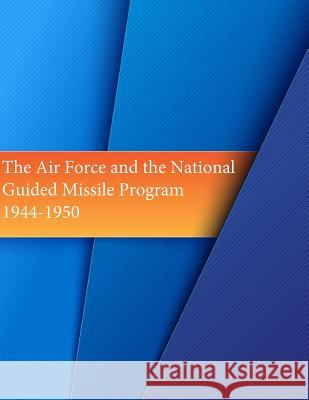The Air Force and the National Guided Missile Program: 1944-1950 » książka
The Air Force and the National Guided Missile Program: 1944-1950
ISBN-13: 9781508856085 / Angielski / Miękka / 2015 / 210 str.
This historical monograph was originally planned as part of a multi-volume history of the USAF guided missile program. However, personnel, organizational, and program realignments within the USAF Historical Division Liaison Office (AFCHO) forced abandonment of these plans. Consequently, the scope of the study is not that initially contemplated but its content seemed of sufficient interest to warrant publication. The monograph covers generally the so-called national guided missile program that slowly evolved between the closing months of World War II and the beginning of the Korean War. More particularly, the monograph treats the interplay among the numerous national security agencies as it concerned guided missiles. The guided missile was among the first weapon systems to be subjected to the disadvantages as well as the advantages of constant scrutiny and intervention at the interservice level. Moreover, this condition was aggravated no little by the interest, but not the forceful leadership, of a number of joint and other national security agencies a niche or more above the level of the services. In a sense, then, the guided missile became the "guinea pig" from which grew the paradoxical situation of both a centralization and proliferation of authority and responsibility over weapon development and use. Only in recent years has this peculiar set of circumstances been altered under the persistent pressure of strong centralization in the Office of the Secretary of Defense. For these reasons, the record of service actions and counteractions from the early guided missile years may well serve as a worthwhile addition to "lessons learned" documentation.
Zawartość książki może nie spełniać oczekiwań – reklamacje nie obejmują treści, która mogła nie być redakcyjnie ani merytorycznie opracowana.











